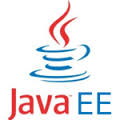In this tutorial, the author explains the cryptography-related concepts and packages in JDK,with code examples.Many of the concepts and technical terms thus learnt will be useful in understanding the Cryptography API in MFCalso. There are three security-related packages in JDK1.4, as follows: JCA/JCE(Java Cryptography Architecture & JavaCryptography Extensions) JSSE( Java Secure-Sockets Extension). JAAS( Java Authentication &AuhorizationService) also read: …
JCA
J2EE Connector Architecture(JCA), An Introduction
Introduction JCA, the J2EE Connector Architecture, is an initiative towards EAI, Enterprise Application Integration. It is a standardized architecture providing the J2EE Components to have plug and play access to heterogeneous EIS, Enterprise Information Systems. Examples of EIS are ERP (Enterprise Resource Planning), Transaction Processing Systems, Legacy Database Systems etc. In the following section we …

